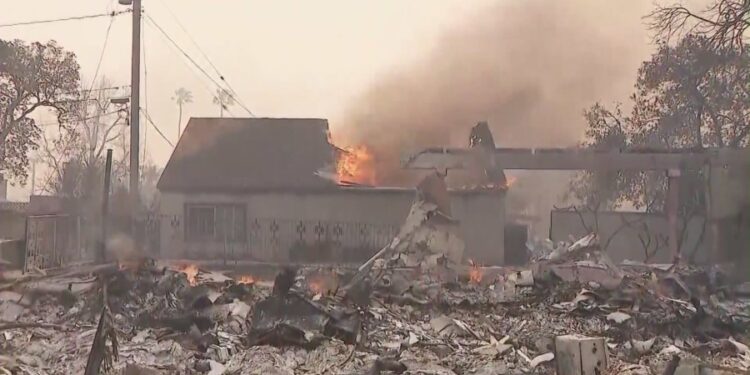
LOS ANGELES (KTLA) — The Eaton Fire in Altadena and Pasadena had claimed at least 17 lives as of Tuesday afternoon, and while firefighters continue to work toward full containment, criticism of the evacuation alert system has already started to mount.
In western Altadena, evacuation orders weren’t issued via wireless alert until “many hours after the fire started,” the Los Angeles Times reports.
While eastern Altadena and other areas evacuated the night of Jan. 7 — just hours after the fire began at about 6:30 p.m. — neighborhoods west of Lake Avenue “did not get electronic evacuation orders until 3:25 a.m. and never received evacuation warnings,” the Times explains.
“By then, burning embers were raining down on neighborhoods on the west side of Altadena and igniting homes,” the report adds.
All 17 people who were confirmed to have been killed in the Eaton Fire, which now stands at about 14,000 acres, have been found west of Lake Avenue, the Times adds.
One western Altadena resident told KTLA’s Chip Yost that he didn’t have his phone’s emergency alerts turned on, but he wasn’t aware of any evacuation orders or warnings until 5 a.m. when he heard deputies order evacuations via bullhorn. Minutes later, his life was in danger.
“At 5:15, I looked out the window and saw embers flying through the air … At 5:30, I opened the door, and there was just a wall of fire,” he said.
Officials have promised at least one investigation into the handling of emergency alerts during this spate of wildfires, with L.A. County Supervisor Kathryn Barger telling the Times that she has “deep concerns.”
“There has to be a thorough examination of life-saving emergency notifications that took place on that horrific evening,” she said. “From what I have been told, it was a night of pure chaos for both fire and first responders.”
In a statement provided to the Times, the Office of Emergency Management noted that “wireless emergency alerts are only one of several means of notifying residents to evacuate their homes during a fire emergency.”
“Our response also includes door knocks, patrols with loudspeakers driving up and down streets messaging the need to evacuate, as well as leveraging local media to help us get the news to residents,” the OEM added. “This is a layered process and system intended to provide redundancy during local and widespread disasters.”






